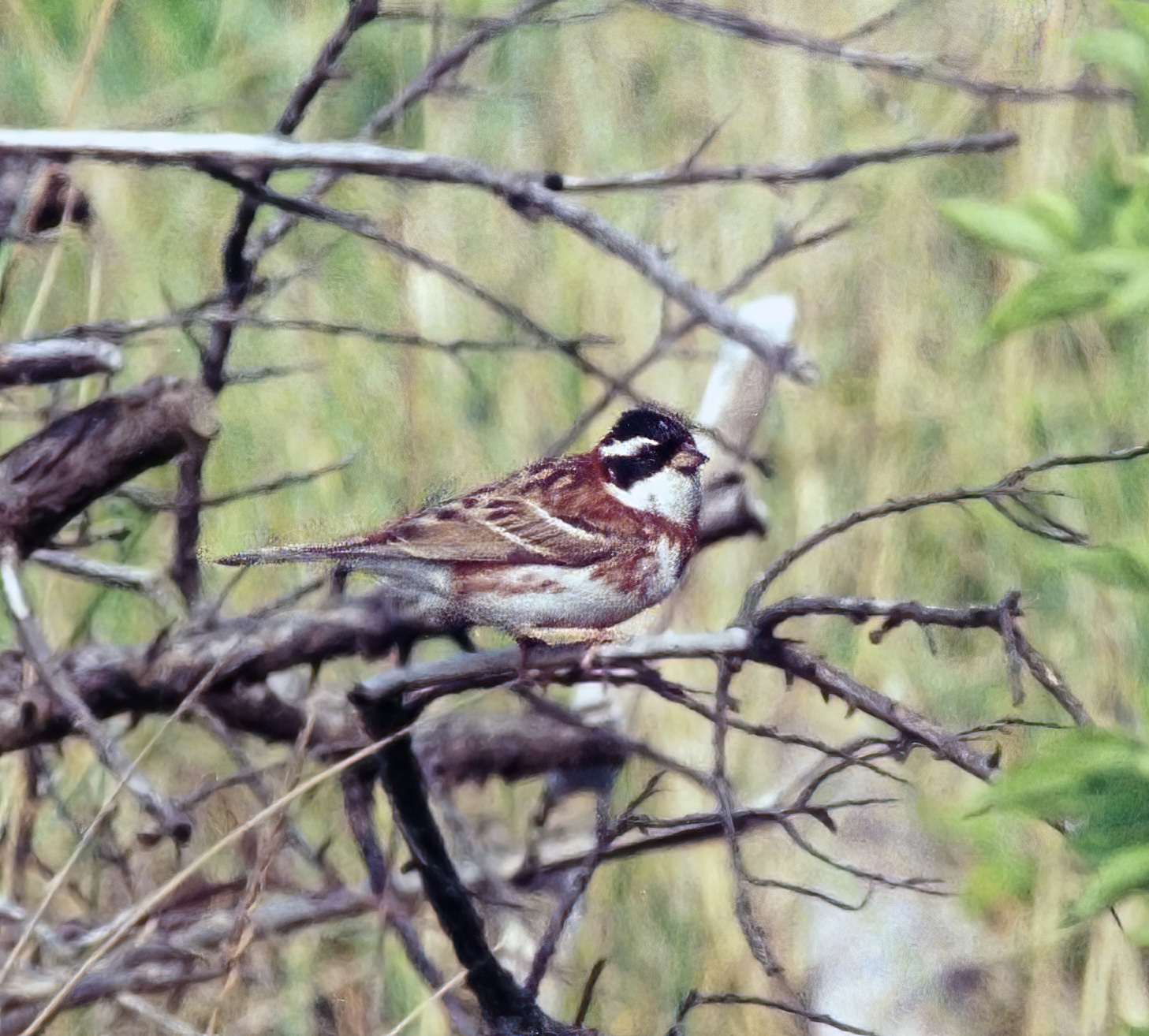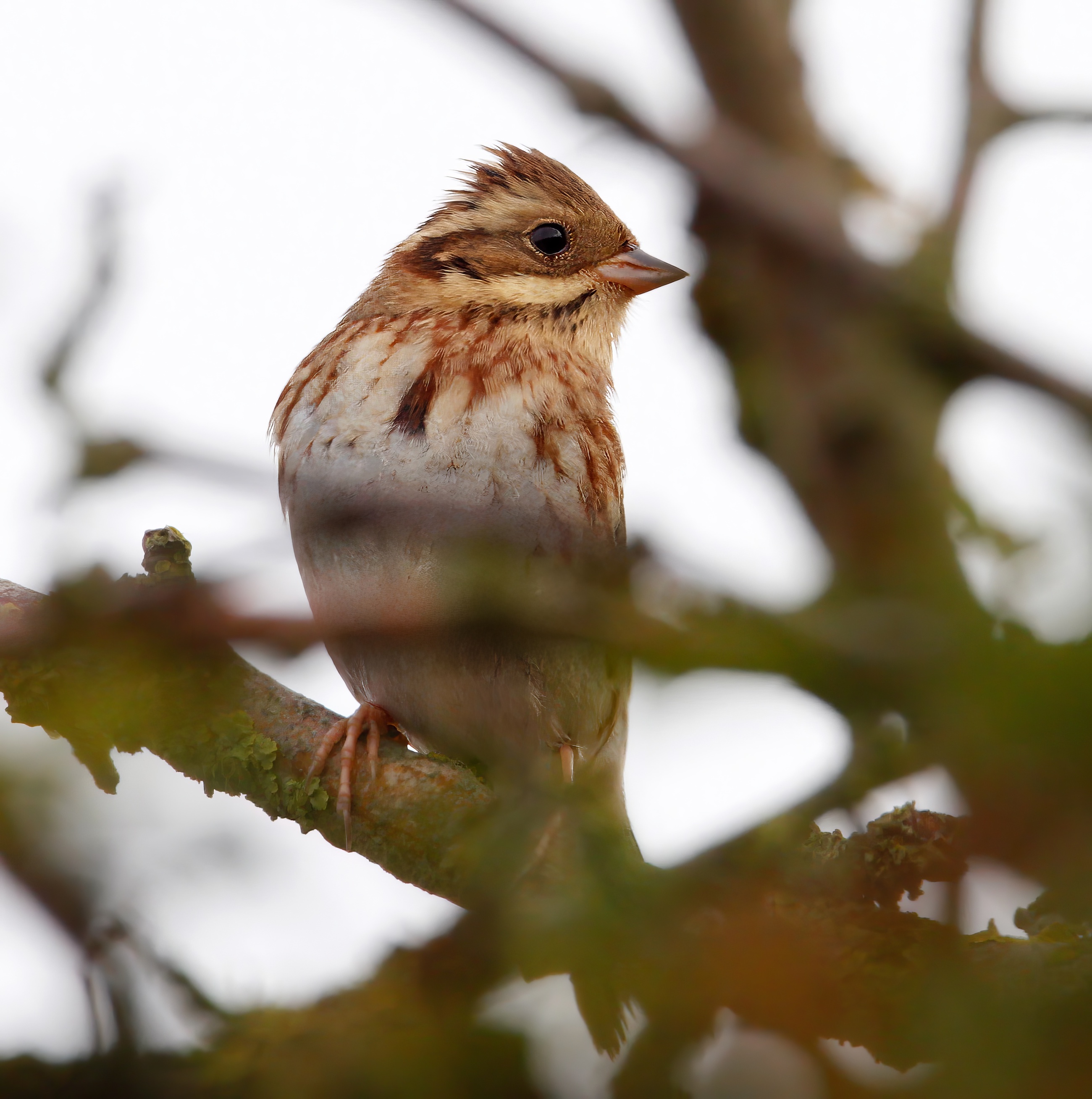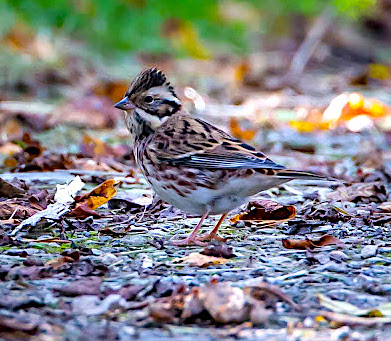Rustic Bunting Emberiza rustica
Vagrant. Scandinavia, Russia.



Rustic Buntings: left, Gibraltar Point May 10th 1993 (Alan Tait); centre, Donna Nook October 3rd 2013 (Michael Tarrant);
right, Gibraltar Point NNR October 11th 2015 (Martin Swannell.).
The first record was a spring male at Gibraltar Point in May 1975. The total now stands at eight records (to 2022). Five have been in spring from a relatively early one at Saltfleetby-Theddlethorpe Dunes NNR on March 22nd, 1993 through to May 24th 1994. The three autumn records have been in the narrow window of Oct 1st-10th. All the birds have been on the coast between North Cotes and Gibraltar Point, with seven having been one day birds, one two days and one a three-day bird.
Around 10 birds a year occur in Britain with a total of 567 from 1950-2019. Lincolnshire does not really get its fair share. Numbers in Britain over the last 20 years have been fairly stable with around 8-10 birds per year, but the heyday of this species in Britain was in the 1990s when there were around 20 per year.
(An early record from Chapel St Leonards in September 1906 was considered inadequately documented by both county and national records committeess and is deleted from the archive).
| Site | First date | Last date | Count | Notes |
| Gibraltar Point NNR | 11/05/1975 | 1 | Male | |
| Gibraltar Point NNR | 01/10/1978 | 1 | 1CY male, trapped and ringed | |
| Saltfleetby | 22/03/1992 | 1 | Trapped and ringed, age/sex uncertain | |
| Gibraltar Point NNR | 09/05/1993 | 11/05/1993 | 1 | Male |
| North Cotes | 23/05/1994 | 24/05/1994 | 1 | Male |
| Pye's Hall, Donna Nook | 03/10/2013 | 1 | ||
| Gibraltar Point NNR | 11/10/2015 | 1 | 1CY male | |
| Horseshoe Point | 15/05/2022 | 1 | Male |
Finder’s report: Rustic Bunting at Gibraltar Point NNR, May 11th, 1975: second county record.
by A. O. Aitken and K. Knowles
Note: this account is based on the two original BBRC submissions by A. O. Atkin and K. Knowles. The RC report for 1975 noted that Rustic Buntings occurred in record numbers with seven in the spring and eight in the autumn, bringing the British total to 71 since 1950. The report also noted that Yellow-breasted Bunting, originating in roughly the same areas was not doing as well, with just three records in 1975
Circumstances
While walking along the entrance road at Gibraltar Point a half mile N. of the Field Centre a bird was seen flying into the top of a small Sycamore tree where there were two Yellowhammers when AOA heard an unusual call note. The bird was clearly seen about 15 ft. up in the tree and some 12 yd. away. It kept calling and after a few seconds it flew to the top of another tree nearby. KK noted the boldly patterned black and white head straight away which was unlike any comparable bird. Showed chestnut nape, chest band and flank streaking, diagnostic features for Rustic Bunting. We also saw it raising its head feathers and it was noted that the wind was not strong enough to be the cause of this.
It stayed in the tree-top for maybe a minute before it flew off over the tops of some Hawthorns towards an Ash tree c.100 yd. away. We couldn’t see where it landed, and by the time we got there it had disappeared and we didn’t see it again.
We made the observations using 10x50 binoculars. Reed Bunting, Yellowhammer, Goldfinch, and Willow Warbler were nearby for comparison. Visibility was moderate to good despite 8/8 cloud cover. There was a moderate force 3 or 4 N/NE wind blowing, and no rain or mist to hamper visibility.
Description
General appearance – a rather active Bunting with a stronger, with a more direct, bounding flight than that of Reed bunting but about the same length. The distinctive flight call was both loud and clear and unlike any other call that we were familiar with, a metallic ‘tic’ or ‘tink’ louder and more metallic in quality then the similar flight calls of Corn, Ortolan or Yellowhammer.
Head and crown – black head, slightly raised crown feathers, white stripe above eye, black below eye stripe, white chin, rusty nape and throat, bold rusty streaks on the flanks.
Upperparts – back was chestnut streaked with darker feathers. Shoulders and wing coverts appeared similar to the basic pattern seen in Reed Bunting but were far more rufous. Rump and tail not seen clearly.
Underparts – off-white with three distinctive features – a large area of chestnut streaks and lines on the flanks ending abruptly on the sides of the belly; a chestnut band across the chest, broad at the edges and thin in the middle; one thin, dark moustachial stripe either side of the chin, running from the bill to the sides of the breast band.
Bare parts – bill dark coloured, leg colour not seen.
Reference
BirdLife International (2018) Species factsheet: Emberiza rustica. Downloaded from http://www.birdlife.org on 03/01/2018.
Blathwayt, F.L. (1912) The Birds of Lincolnshire: additions to the County list. The Zoologist 16: 60-63.
Whitaker, J. (1906). Late stay of swift. The Zoologist 10: 392.
Witherby, H.F. and Ticehurst, N.F. (1908) Of the more important additions to our knowledge of British birds since 1899. British Birds 1: 246-256.
(Account prepared in January 2018; includes records to 2022)

